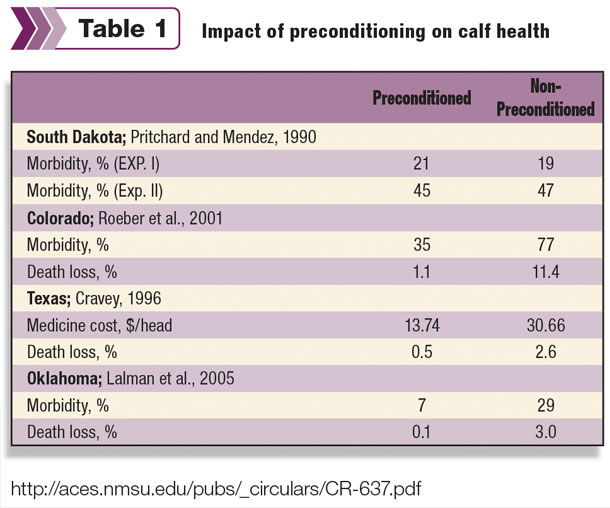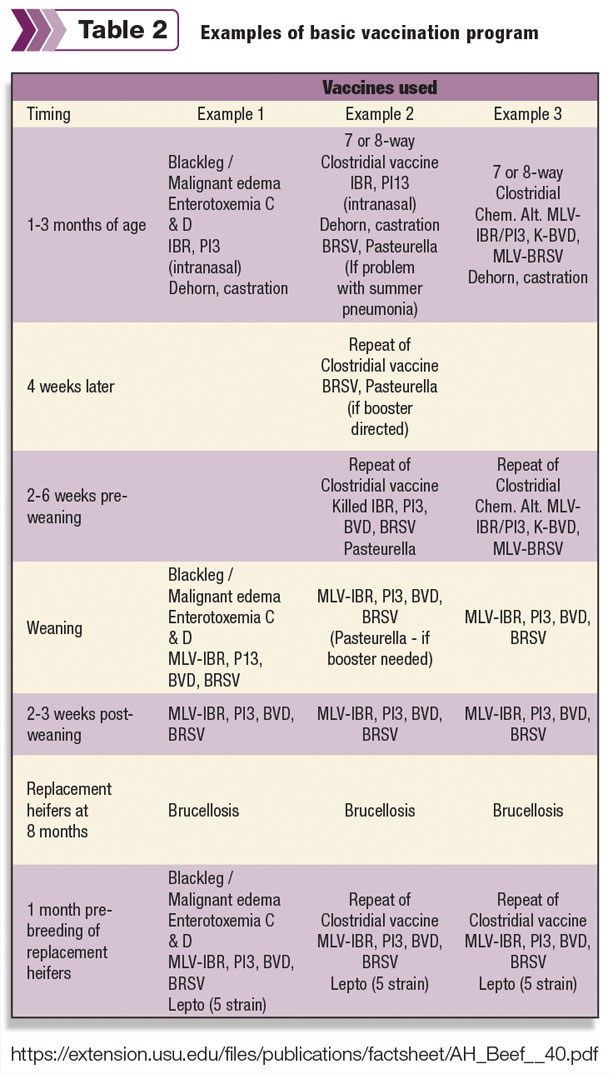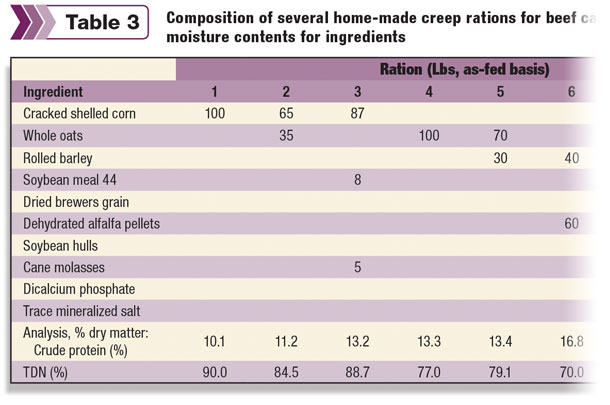When cattle come into the feedyard, they are immediately processed – which entails vaccination, treatment for parasites and identification. The transition to the feedyard is extremely stressful.
Freshly weaned calves are more susceptible to respiratory disease and nutrition-related illness. Research has demonstrated that preconditioned calves experience lower rates of morbidity and mortality compared to freshly weaned calves. Freshly weaned calves will also have medicine costs double that of preconditioned calves.
One researcher found that morbidity and mortality were 6.1 and 0.7 percent lower for preconditioned calves versus freshly weaned ones. Table 1 lists similar findings in other preconditioning studies.

Prior to the fall run, there are certain management steps that can be taken to prepare calves for the next production phase at the ranch level, otherwise known as preconditioning.
These include vaccinations, low-stress handling and weaning, and nutrition. Weaning and shipping are both stressful events for the animal, and many industry beef nutritionists will agree that preconditioning will lessen the effects of shipping stress once at the feedyard.
Process at pre-weaning
A good preconditioning program starts with pre-weaning. Many calves receive their first round of vaccinations at branding (2 to 3 months old), which likely includes prevention against clostridial diseases, respiratory diseases and an antiparasitic, along with castration and dehorning.
These vaccinations need to be repeated during pre-conditioning. Ideally, vaccinations will be given 14 to 21 days before weaning. This reduces stress at weaning and ensures high antibody titers by weaning time.
Producers need to consult their veterinarian on a pre-weaning vaccination program. Table 2 is an example of some basic vaccination programs. It is extremely important calves nursing from cows do not receive a modified live vaccine (MLV) unless cows were vaccinated with the same strain of MLV pre-breeding.

Creep feeding is a management tool that can be utilized prior to weaning. It helps with ensuring calves are receiving the proper nutrition, as well as helping move calves from one feed source to the next. Creep feeding during the last 45 days before weaning is a means of putting additional weight onto calves, without making them fleshy, while preparing calves for the type of feed they’ll receive after weaning.
Research is inconclusive if creep feeding provides an advantage in terms of efficiency and cost-effectiveness, but it does have value in preparing calves for feed they’ll receive post-weaning.
Creep rations should contain 14 to 16 percent crude protein and 65 to 80 percent total digestible nutrients (Table 3). Feedstuffs high in digestible fiber and protein, such as distillers grains, brewers grains, corn gluten feed and wheat midds, will cause less problems with acidosis and provide quality protein.
Click here or on the image above to view it at full size in a new window. (PDF, 1.1MB )
Highly fermentable starch sources, such as wheat or ground corn, should be avoided. Calves can handle limited amounts of non-protein nitrogen (NPN; urea or biuret) by weaning, but there needs to be sufficient natural protein in the diet to allow utilization of the NPN. At this time, calves should have unlimited access to forage to ensure proper rumen function.
One means of introducing calves to creep feed is providing a limited amount of creep feed to the mother cows a few days prior to exposing calves to the creep ration, since calves learn to eat with their mothers.
Also scatter some of the feed around and within the creeping area so the mother cows will loiter nearby. Care should be taken to observe calves regularly when introducing creep feed to make sure calves are not over-consuming creep feed, resulting in digestive problems.
It’s good practice to plan on weaning and preconditioning 30 to 60 days prior to shipping, 45 being the typical standard. This will reduce separation stress and provides time to monitor calves closely for illness. Once weaned, continue to provide calves access to free-choice hay or forage.
Breaking in the bunk
Because calves are walking fencelines, looking for a way to escape back to mom, placing feed and water troughs perpendicular to fencelines will help maintain their intake and initiate the process of bunk breaking.
Calves may not initially dive right into the bunk, so “spilling” feed such as hay over the bunk edges will pique their curiosity, as they’ll eat the hay off the ground, working their way into the bunk. Also ensure proper bunk space (12 to 24 inches per animal) to calves so the more timid ones will still receive adequate nutrition.
Calves that have been raised with streams and ponds as the water source will struggle to find water in water troughs. To help train them, let water troughs overflow, flooding the area around the trough and once again using a calf’s natural curiosity to your advantage. Water quality is extremely important.
In areas with high sulfur or iron content, a water test may be needed to determine if these minerals may create antagonism with critical trace minerals such as copper.
During the pre- and post-weaning period, calves should be provided with a high-quality mineral supplement. Important trace minerals include copper, manganese, selenium and zinc. These trace minerals are important to proper immune function and response to vaccination.
Providing at least a portion of these minerals in their chelated form may improve mineral status of calves during the preconditioning period. Vitamin A, D and E may need supplementation.
Supplementation with calcium and phosphorus may also be needed. However, mineral and vitamin supplementation programs need to be tailored to the individual ranch and feedstuff used. Contact your extension professional or consulting nutritionist for more information.
Calves that have gone through these management steps will be better prepared to enter a feedyard, as their immune system has been strengthened from a solid ranch vaccination program.
They’ve been introduced to the concentrated feeds through creep feeding and post-weaning diet. They will experience less stress from already being weaned and be able to adapt quickly to feedbunks from being bunk-broke during weaning.
Calves that come into feedyards like this are more likely to receive a premium price and perform at a greater capacity, leading to the ultimate finish line of a quality meat carcass. ![]()
References omitted due to space but are available upon request.

-
Meranda Small
- Oneida County
- Extension Educator University of Idaho








